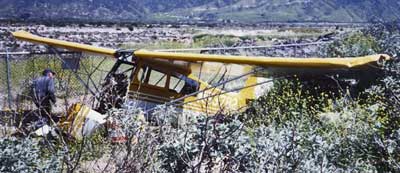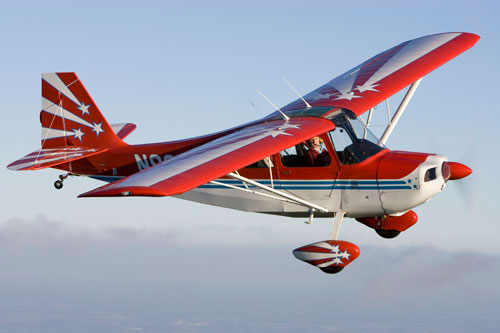



Bellanca Citabria - $$5.95
In 1964 Bellanca introduced the acrobatic version of the Champ which they dubbed Citabria, which, no doubt you have heard, is "airbatic" spelled backwards. Fitted with either a 150 or 108 horse powered Lycoming, this machine was the first aircraft certified in the US for aerobatic flight.
Bellanca Citabria
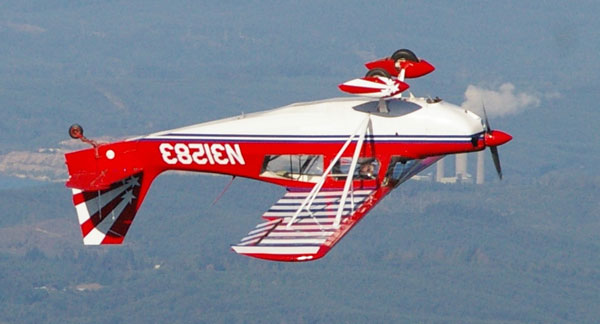
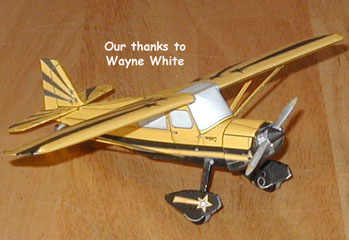 Bellanca Citabria Champion (Aeronca) and Super Decathlon acrobatic
light airplane downloadable models.
Bellanca Citabria Champion (Aeronca) and Super Decathlon acrobatic
light airplane downloadable models.
In 1964 Bellanca introduced the acrobatic version of the Champ which
they dubbed Citabria, which, no doubt you have heard, is "airbatic"
spelled backwards. Fitted with either a 150 or 108 horse powered
Lycoming, this machine was the first aircraft certified in the US
for aerobatic flight. A beefed up version which could handle +6
-5 G loads was also produced and is called the Decathlon. Bellanca
went out of business in 1980.
Touted as the best aerobatic trainer around. Powered by a 180hp
AEIO-360, this aircraft is stressed to 6 Gs positive and 5 Gs negative.
It is capable of 4 minutes of sustained inverted flight. The symmetrical
wing makes inverted maneuvers a dream.
Y'all, This newest Citabria is yet another in the ever-growing list of reasons he's the jefe. A really super little model that's pure FG in its simplicity and super results. A fun build...Just had to share. Wayne White 9/2003
This is listed variously as a Bellanca product but that company is long out of business. Now made by American Champion Aircraft. The landing gear differs as do other details. There are several versions of this offered by FG; one with Cessna type leaf spring landing gear, and another with the original Bellanca "shock absorbing" gear. I built the blue and yellow one with the shock absorbing gear and it was an easy job and made into a pretty model. The leaf spring gear versions would be good for a beginner. Everything fit like a "champion.." - Alan Wheeler
Makes me want to hop in and take it for a spin. Where did I put my shrinking ray? -Scott
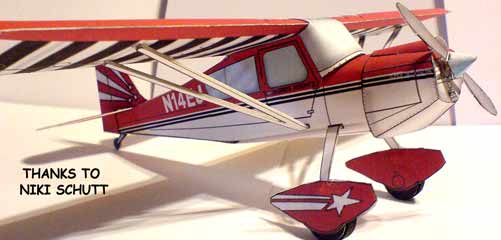 |
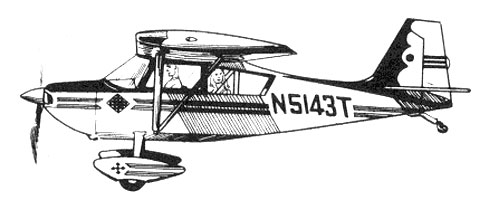 |
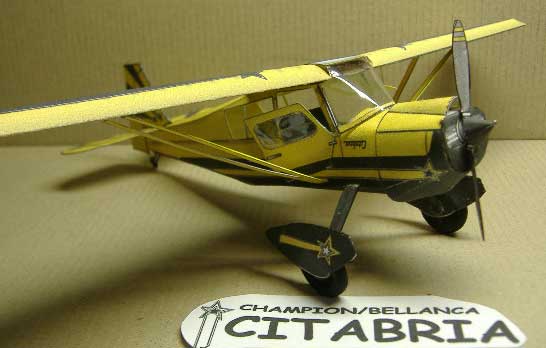 I think I built about three of these before I realized that "Citabria" was printed upside down on the fuselage...Bob |
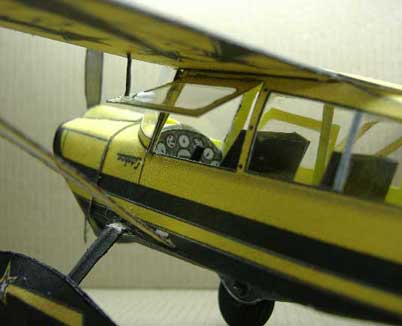 Modeln Pal, Bob Martin, has figured out how to make fabulous clear windscreens and even complex canopies using common clear packing tape. Its easy !! Step by Step instructional |
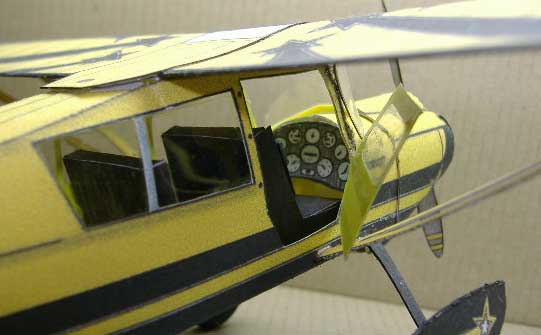 |
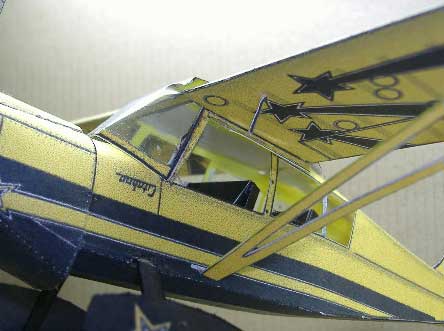 |
The Bellanca Citabria acrobatic light airplane
Most Citabria pilots cruise along at 115 miles per hour, the aircraft has a ceiling of 17,000. It carries thirty-five US gallons of fuel which gives it a range of about 560 miles. Where it really shines is in its handling and performance with a stall speed of only 51 miles per hour, gets off the ground over a 50 foot barrier in 630 feet and lands in 755 feet. Once off the ground it will climb at 1,120 feet per minute. These are about the same performance figures for the Scout. The little Champ on the other hand hustles along at about 86 miles an hour for a range of 310 miles but takes off in 450 feet and lands in 300. In this picture a pilot and flight engineer depart with a full chest of tools as the aircraft can carry a load of 540 pounds.
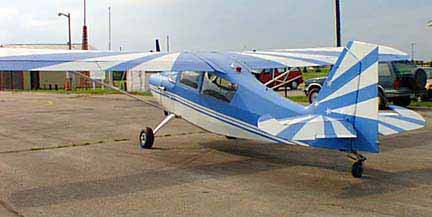
The model 7ECA Citabria is a direct descendant of
the 7AC Aeronca Champion and the L-16. This model should be
built exactly as the instruction page for the Champ indicates,
except for the addition of the propeller spinner. During the
1960s, the Champion Aircraft Co. of Osceola Wisconsin had the
Champ design restructured and type certified as an aerobatic
trainer. Starting in the late 1960's or early '70s the factory
used spring steel landing gear in lieu of the 'no bounce' type.
Champion Aircraft sold out to Bellanca Aircraft and continued
building airplanes at Osceola until the factory burned to the
ground in the late 1970s.
In 1990 the American Champion Aircraft Company in Racine County Wisconsin started producing Citabrias. New Citabrias have 118 HP and 160 HP engines. Further refinements called the Super Decathlon and the Scout have 180 HP engines. This is a far cry from the 65 HP Champ. American Champion is planning to reintroduce the Champ with 80HP.
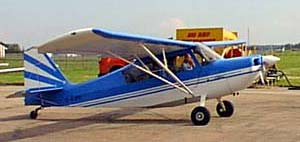
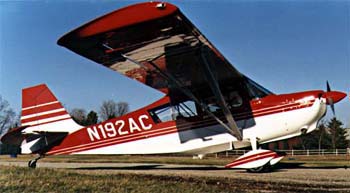
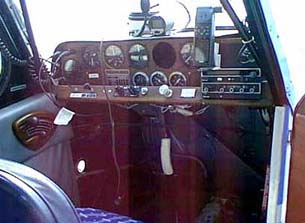 Here is a view of the Citabria panel . The most obvious feature is that this is a stick and rudder operation with the throttle on the left. This machine has an intercom and it looks like it has had some major additions to the panel with a GSP (Global Satellite Positioning) unit in place and a good looking King radio and transponder.
The cockpit and aft seating area is roomy for a small aircraft but the panel is deliberately designed to be small and functional.The visibility from inside a Citabria is exceptional. The Scout and Decathlon versions have a skylight. |
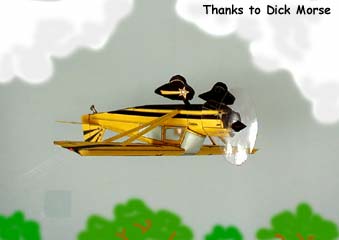
Bellanca Citabria:
Acquisition by Bellanca of the assets of in September 1970
modest aerobatic facility with led to production of aircraft 7AC
Champ, of which more than 7,000 had been built. The most enduring
of these derivatives were the Bellanca.
The Bellanca Citabria combines Champion Aircraft Corporation, good cruising performance and a derived from that company's Model roomy cabin for the two occupants.
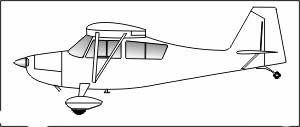 |
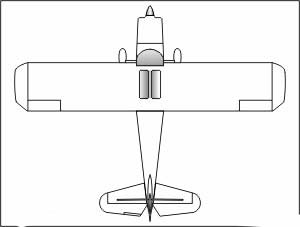 |
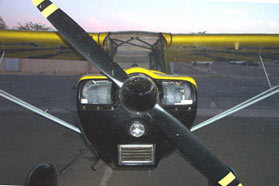 |
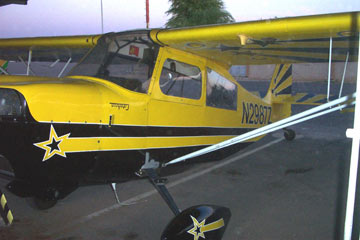 |
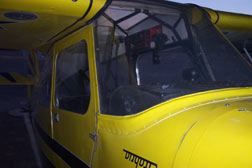 |
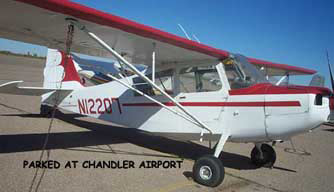 |
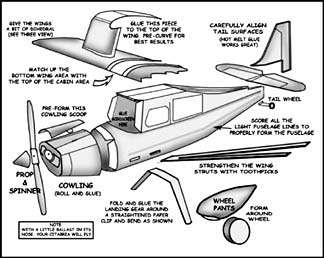 |
|
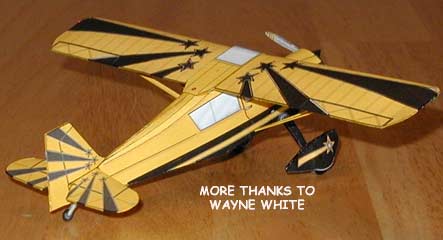
|
Specifications
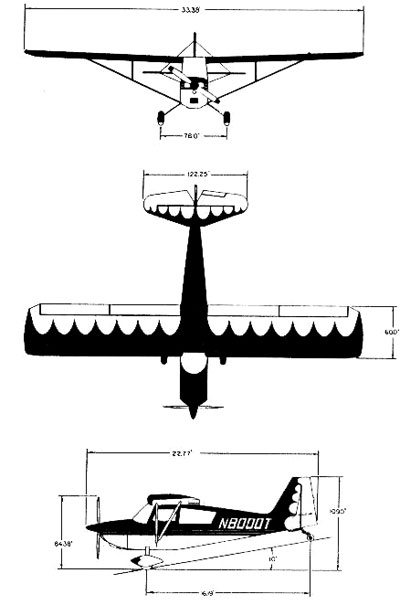 |
Crew: one pilot Capacity: one passenger Length: 22 ft 9 in Wingspan: 33 ft 5 in Height: 6 ft 9 in Wing area: 165 ft² Airfoil: NACA 4412 Empty weight: 1,110 lb Loaded weight: 1,650 lb Useful load: 540 lb Max takeoff weight: 1,650 lb Powerplant: 1× Lycoming O-320-A2B, 150 hp Aspect ratio: 6.8 Performance Never exceed speed: 162 mph Cruise speed: 126 mph Stall speed: 51 mph Range: 500 mi Service ceiling: 12,000 ft Rate of climb: 1,120 ft/min Wing loading: 10 lb/ft² Power/mass: 11 lb/hp |
